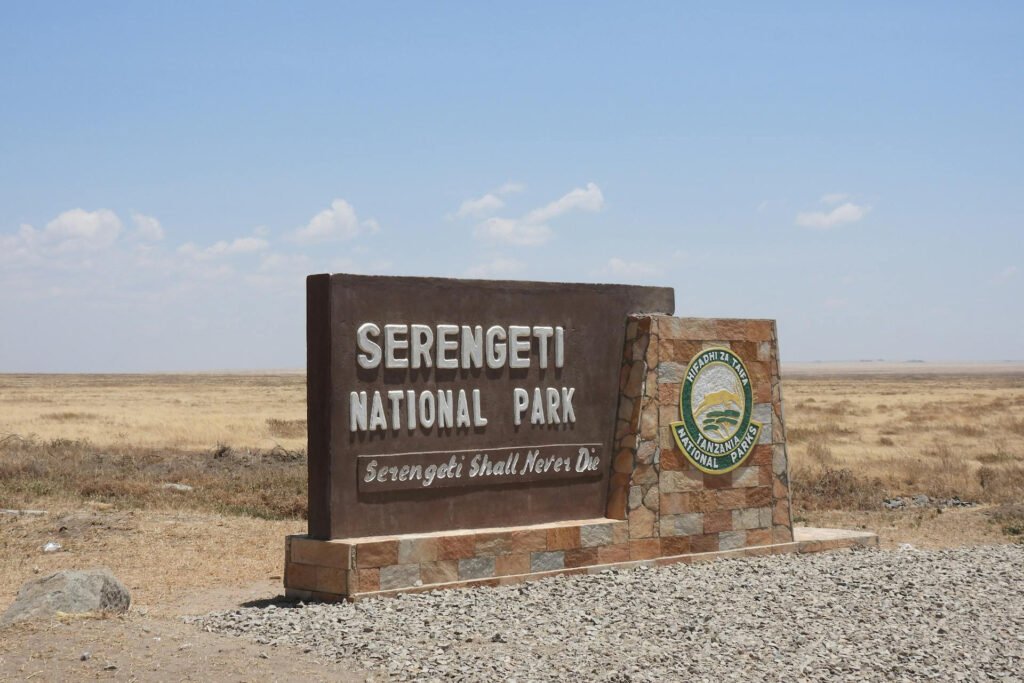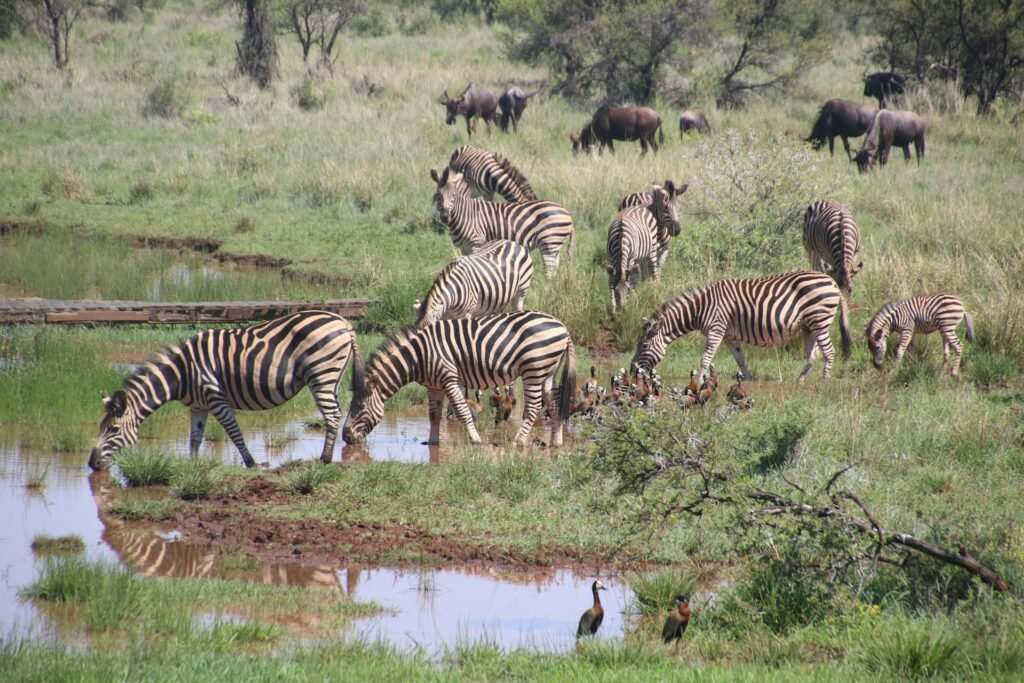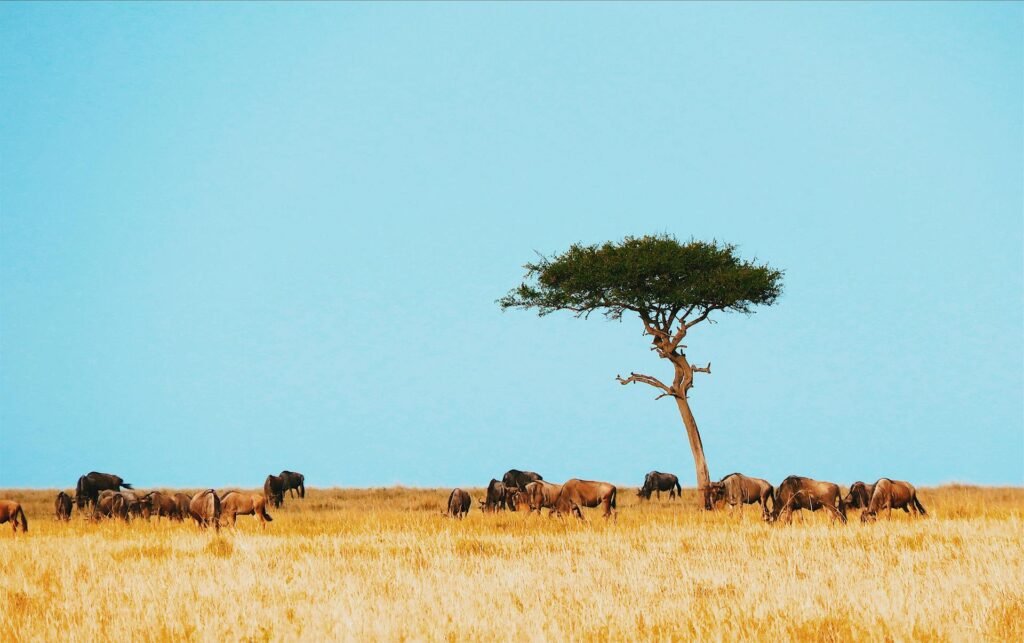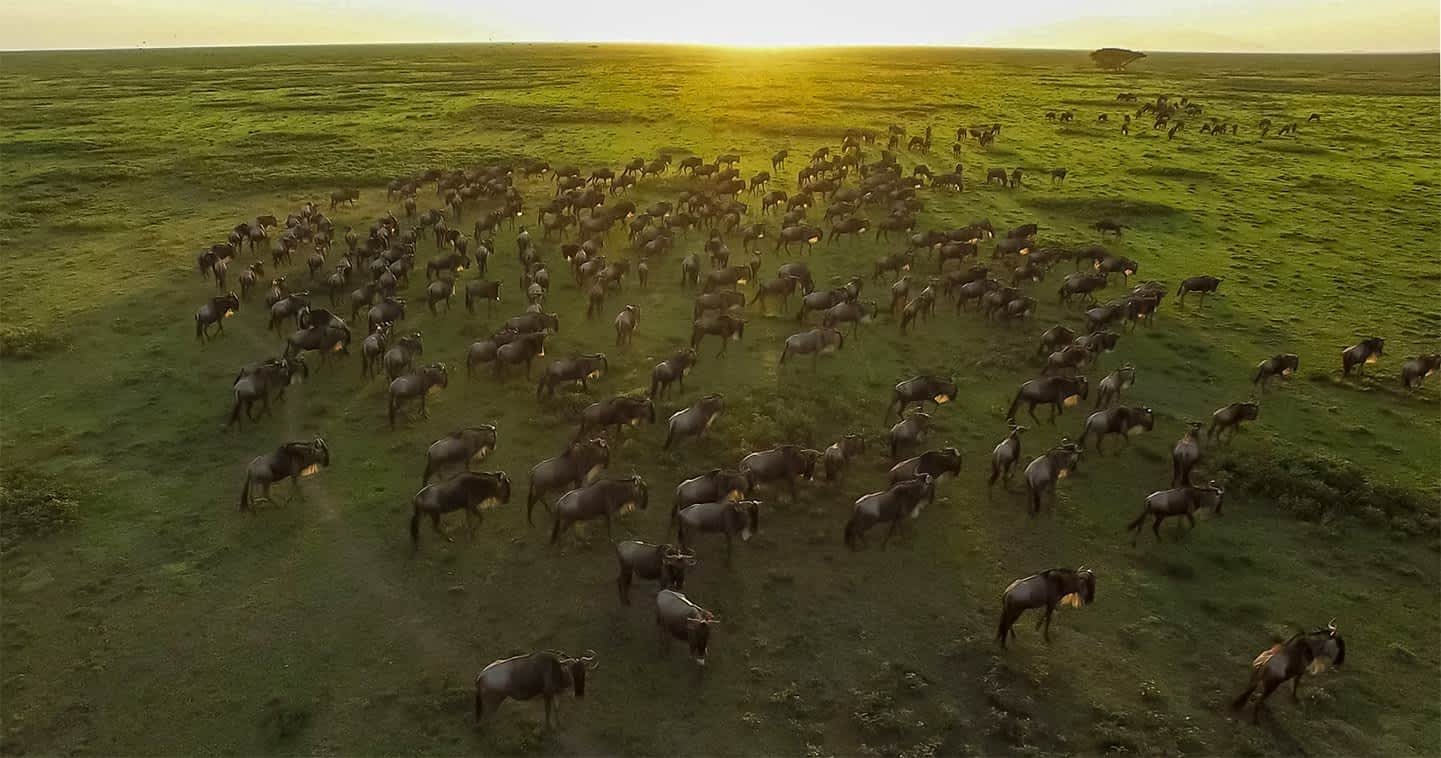Serengeti National Park, Tanzania’s largest national park, is one of the world’s premier wildlife sanctuaries. Its name, derived from the Maasai language, means ‘endless plains,’ the park’s expansive grasslands, wide-open spaces, and stunning sunsets epitomize the quintessential African experience.
The Serengeti is most renowned for its awe-inspiring annual migration, where over 1.5 million wildebeest and 250,000 zebra travel across the plains. At the end of the rainy season, typically in April and May, the herds gather in the central Serengeti before embarking on a breathtaking journey towards Lake Victoria to the west and the Masai Mara to the north. Along the way, they seek fresh pastures and permanent water sources, a critical refuge during the dry months. This massive movement of herbivores also draws many predators, especially lions and hyenas, who target the young, old, and weak.
The Serengeti is also a birdwatcher’s paradise, with over 500 species, ranging from massive ostriches to delicate honeybirds.
At the heart of the park lies the Seronera Valley, a lush area filled with acacia trees and grassy plains. This area is an ideal habitat for grazers like impalas and gazelles and their predators, including lions, leopards, and cheetahs.
As you move north, the landscape shifts, with rolling hills and scattered woodlands becoming home to giraffes, impalas, and elephants. To the west, near Lake Victoria, the “black cotton soil” plains become nearly impassable during the rainy season. The Grumeti River winds through the region, famed for its giant crocodiles, black-and-white colobus monkeys, and many bird species.
A unique feature of the Serengeti is the “Kopjes”—ancient granite rock formations scattered across the plains. These rocky outcrops create a distinctive microhabitat, offering shelter and protection to wildlife, including lizards, mongooses, monkeys, dik-diks, Verreaux eagles, and leopards.








